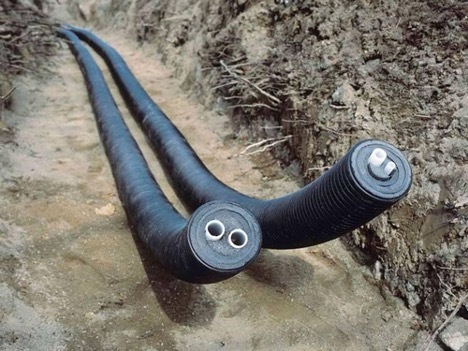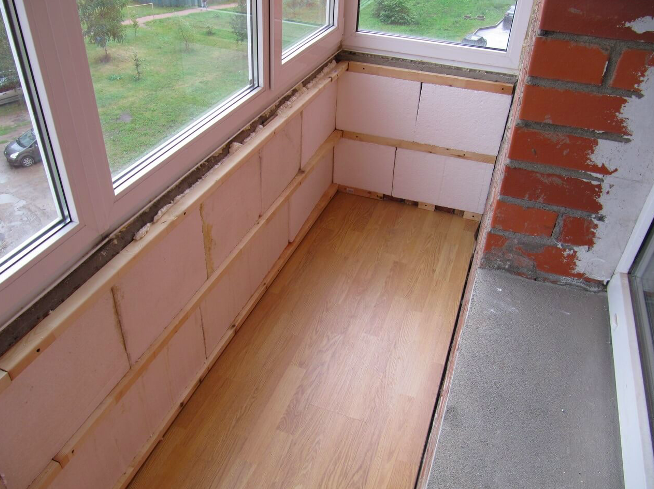Creating comfortable conditions in a private home during the cold season is impossible without a high-quality heating system. One of the important elements of such a system is the heat path from the boiler room to the house, which ensures uninterrupted heat transfer. If you have the skills and desire, you can try to organize the creation of a thermal route yourself. In this article we will look at how to properly insulate and install a thermal route in the ground with your own hands.

The content of the article
- Selection of materials
- Laying process
- Insulation technology
- Errors when creating a heating main
- Conclusion
Selection of materials
Choosing the right materials is the basis for successfully organizing a thermal route for a private home. Let's take a closer look at what aspects should be taken into account when choosing components for the heating main.
The main element is pipes. Pipes for the heating system must be durable, corrosion-resistant and chemically inert. Popular options include metal-plastic, polypropylene and steel pipes. Metal-plastic and polypropylene pipes are characterized by lightness and relative ease of installation, while steel pipes are highly durable.
Insulation of heating pipes laid in the ground is an important step that ensures the efficiency of the heating system. The insulation must be waterproof and have good thermal insulation properties. The best options may be foil polyurethane foam or mineral wool.
Choosing insulated heating pipes for laying in the ground allows you to reduce the time for insulation. Such pipes already have a layer of insulation and, as a rule, a protective shell, which facilitates the installation process and provides additional protection.
The depth of laying the thermal route depends on many factors, including the climatic conditions of the region and the type of soil. The optimal depth helps prevent pipes from freezing in winter and provides protection against damage.
You will also need various components, such as fittings, fasteners and insulating materials. When installing a heating system, it is important to use high-quality and reliable components that will ensure long-term and trouble-free operation of the system.
Laying process

Laying a thermal route in the ground is a serious engineering project that requires clear planning and compliance with technological standards. Let's look at the stages of this process in more detail.
The first stage is preparing a trench for the heating route from the boiler room to the house. The depth and width of the trench is determined based on the diameter of the pipes and insulation requirements. The depth of laying the thermal route must ensure that the pipes are protected from freezing.
After preparing the trench, you should start insulating the heating pipes laid in the ground. If you have chosen insulated heating pipes for laying in the ground, you can skip this step. Otherwise, the pipes are wrapped with insulation, providing reliable thermal insulation.
Next, the heating system pipelines are laid in the prepared trench. It is important to ensure the correct slope of the pipes, which avoids standing water in the system.
After laying the pipes, the trench is filled back with earth, and it is important to ensure good compaction of the soil around the pipes to avoid the formation of voids and failures.
After completing all work, it is necessary to check the system for leaks and operability. This is an important step that helps ensure that the work performed is correct.
After a successful check, you can begin installing the heating system in the house, connecting the heat route to the heating system and adjusting its operation to ensure a comfortable indoor climate.
Laying a thermal route in the ground is a process that requires care, thoroughness and compliance with all technological rules. With the right approach, you will get a reliable and efficient heating system that will provide comfort and coziness in your home.
Insulation technology
Insulation of heating pipes laid in the ground includes several stages. First of all, the pipes are wrapped in insulation and then installed in pre-prepared trenches. It is important to ensure reliable insulation from moisture and cold using high-quality materials.
Errors when creating a heating main
One of the main mistakes when laying a thermal route in the ground is insufficient preparation. This includes incorrectly calculating trench depth, choosing poor routes for pipes, and ignoring soil conditions. Proper preparation is a key step that affects the long-term effectiveness and safety of the system.
The use of low-quality or unsuitable materials can lead to premature system failure. This is especially important when choosing pipes and insulation. Poor-quality pipes for the heating system or unsuitable insulation can lead to heat loss, freezing of pipes and other problems.
Improper pipe installation, including improper slope, can cause water to accumulate in the system, which can cause the water in the pipes to freeze during the winter. In addition, insufficient or incorrect pipe insulation can lead to significant heat loss and, as a result, increased heating costs.
Ignoring technological standards and manufacturers' recommendations when installing a heating system can lead to improper operation of the system. And this will worsen its efficiency and shorten its service life. This may also incur additional repair and maintenance costs in the future.
Skipping the step of checking the system for leaks and proper operation after piping is installed can lead to serious problems in the future. This is an important step that helps identify possible leaks. It will also help minimize other problems before the system starts operating.
Avoiding these and other errors will help ensure the reliability and efficiency of the heat trace. This will also save time and resources on subsequent maintenance and repair of the heating system.
Laying heating system pipelines in the ground is a labor-intensive process. It requires a careful approach and compliance with all technological standards. By following the rules for laying heating system pipelines, you can ensure a long service life of the heating route. It also provides comfortable conditions in the house during the cold season.


